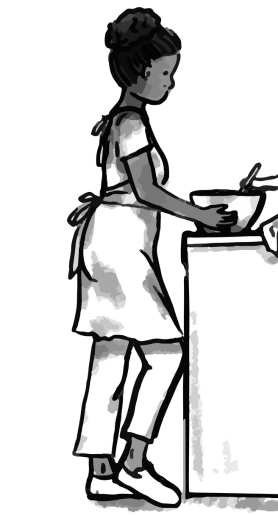
Starting with the Basics
Juneteenth marks June 19, 1865, when federal troops arrived in Texas with news that slavery had ended. The catch? The Emancipation Proclamation had been signed over two years earlier. This delay tells a story about communication, power, and the long road to justice that even young children can begin to understand.
For little ones, you might start simple: “This is a day when we celebrate that all people became free.” Older kids can handle more nuance about why the news took so long to travel and what that meant for families who were still enslaved. The key is reading your audience and adjusting accordingly.
Activities That Actually Work
Last year, Maria, a nanny I know in LA, tried something brilliant with her eight-year-old. They researched what life was like for children in 1865 and compared it to today. They made a simple timeline with pictures and talked about how much has changed. The visual element helped the concept click in a way that just talking never could have.
Reading is your best friend here. Books like “Juneteenth for Mazie” or “All Different Now” give you a starting point for conversations. But don’t stop there. After reading, try acting out parts of the story or drawing pictures of what freedom might have felt like to newly freed families.
Art projects work wonders too. Creating freedom quilts with construction paper, designing celebration banners, or even just coloring while you talk helps kids process big emotions and concepts. Their hands stay busy while their minds work through new ideas.
The Magic of Music and Movement
Music has always been central to African American culture and celebration. Teaching kids traditional spirituals like “Wade in the Water” or “Swing Low, Sweet Chariot” connects them to the historical experience while giving them something joyful to remember. Even simple clapping games or freedom songs can make the day feel celebratory rather than just educational.
Dancing is another natural fit. Whether it’s learning traditional steps or just moving freely to music, physical expression helps children embody the joy of celebration. Plus, it’s fun, which matters when you’re dealing with heavy historical topics.
Food as Teacher
Nothing brings culture to life quite like food. Traditional Juneteenth menus often feature red foods and drinks, barbecue, and family recipes passed down through generations. Making red punch, baking cornbread, or even just preparing a special snack gives you natural conversation starters about tradition, family, and celebration.
I love watching kids’ faces light up when they connect food to stories. “Why is everything red?” becomes a teaching moment about symbolism. “Who taught you this recipe?” opens doors to discussions about how knowledge and culture get passed down through families.
Handling the Hard Questions
Kids ask tough questions. “Why were people mean to other people?” “How come some people weren’t free?” These moments test every nanny’s skills, but they’re also opportunities for real connection and learning.
Honesty matters, but so does hope. You can acknowledge that people made unfair rules and treated others badly while emphasizing that many people fought to change those rules. Focus on heroes, helpers, and progress without glossing over the real struggles that happened.
Working with Families
The best approach is always collaborative. Check in with parents about their comfort level and family values. Some families want deep historical discussions; others prefer focusing on celebration and community. When you work with agencies like Seaside Nannies, you often get guidance on handling these conversations appropriately.
Remember that you’re not expected to be a history teacher or therapist. Your job is to create safe spaces for questions, provide age-appropriate information, and help children develop empathy and understanding. That’s actually a pretty big job when you think about it.
Beyond June 19th
Here’s what I’ve learned from nannies who do this well: Juneteenth isn’t just about one day. It’s about opening doors to year-round conversations about fairness, kindness, and appreciating differences. When you handle this holiday thoughtfully, you’re building foundations for children who grow up curious about the world and committed to treating everyone with respect.
The children in your care today will be tomorrow’s leaders, neighbors, and community members. The conversations you have about freedom, justice, and celebration during Juneteenth help shape how they’ll interact with others throughout their lives. That’s the kind of impact that makes all the planning and preparation worthwhile.
